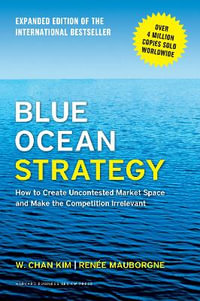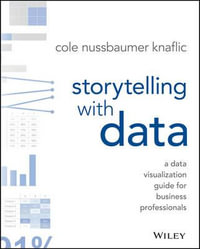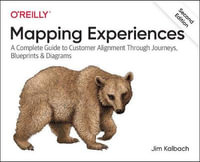| Preface | p. vii |
| Introduction | p. 1 |
| Background of Inter-Organizational Trust in E-Commerce | p. 2 |
| Significant Prior Research and Research Rationale | p. 4 |
| Previous Research on E-Commerce Adoption | p. 5 |
| E-Commerce History and Growth | p. 6 |
| Factors that Drive E-Commerce Adoption | p. 7 |
| Factors that Inhibit E-Commerce Adoption | p. 8 |
| Initial Exploratory Study | p. 12 |
| Respondent Profile | p. 13 |
| Key Findings of the Exploratory Survey | p. 14 |
| Potential Benefits vs. Achieved Benefits | p. 15 |
| Potential Barriers and Risks | p. 16 |
| Comparisons between Europe and Australia/New Zealand (ANZ) | p. 17 |
| Characteristics of E-Commerce Leaders | p. 19 |
| Recommendations and Lessons Learned | p. 20 |
| The Future of E-Commerce in Australia and New Zealand | p. 21 |
| Literature Review | p. 22 |
| The Need for Inter-Organizational Trust | p. 23 |
| Trading Partner Trust | p. 25 |
| Trading Partner Trust Characteristics | p. 27 |
| Characteristics in the Definition of Trust | p. 29 |
| Trust Building Mechanisms in Business Relationships | p. 30 |
| Types of Trading Partner Trust | p. 40 |
| Perceived Benefits of E-Commerce | p. 43 |
| Perceived Risks of E-Commerce | p. 48 |
| Technology Trust Mechanisms in E-Commerce | p. 52 |
| Outcomes of E-Commerce Participation | p. 55 |
| Perspectives of Organizational, Economic, and Political Theories on Inter-Organizational Trust | p. 56 |
| Inter-Organizational-Relationship Theory and Trust Perspective | p. 57 |
| Transaction-Cost Economics Theory and Trust Perspective | p. 58 |
| Resource Dependency Theory and Trust Perspective | p. 60 |
| Evolution of Inter-Organizational Systems to Inter-Organizational Trust | p. 61 |
| Conceptual Model of Inter-Organizational Trust in E-Commerce Participation | p. 63 |
| The Relationship between Trading Partner Trust and Perceived Benefits of E-Commerce | p. 64 |
| The Relationship between Trading Partner Trust and Perceived Risks of E-Commerce | p. 66 |
| The Relationship between Technology Trust Mechanisms in E-Commerce and Perceived Benefits of E-Commerce | p. 67 |
| The Relationship between Technology Trust Mechanisms in E-Commerce and Perceived Risks of E-Commerce | p. 68 |
| The Relationship between Perceived Benefits and Participation in E-Commerce | p. 69 |
| The Relationship between Perceived Risks and Participation in E-Commerce | p. 69 |
| Research Method | p. 71 |
| Research Methods in Information Systems | p. 71 |
| Quantitative and Qualitative Research Approaches | p. 73 |
| Justification of a Case Study Research Method | p. 75 |
| Multiple Case Studies | p. 77 |
| Case Study Research Design | p. 77 |
| Sampling | p. 79 |
| Size of Research Sample | p. 81 |
| Sampling Procedures (Choice of Organizations or Cases) | p. 81 |
| Data Collection | p. 83 |
| Ensuring the Validity of Data | p. 84 |
| Instrumentation of the Conceptual Model | p. 88 |
| Data Analysis | p. 89 |
| Findings and Discussion | p. 91 |
| Background of the Uni-directional Dyads | p. 91 |
| Uni-directional Dyad 1: NZ Customs (Bi-directional Dyad A) | p. 91 |
| Uni-directional Dyad 2: Electronic Commerce Network Ltd (Bi-directional Dyad A) | p. 93 |
| Uni-directional Dyad 3: Customs Broker (Bi-directional Dyad B) | p. 93 |
| Uni-directional Dyad 4: Importer (Bi-directional Dyad B) | p. 94 |
| Uni-directional Dyad 5: Cisco NZ (Bi-directional Dyad C) | p. 95 |
| Uni-directional Dyad 6: Compaq NZ (Bi-directional Dyad C) | p. 96 |
| Uni-directional Dyad 7: Siemens NZ (Bi-directional Dyad D) | p. 96 |
| Uni-directional Dyad 8: Telecom NZ (Bi-directional Dyad D) | p. 97 |
| Findings by Research Propositions from all Uni-directional Dyads | p. 97 |
| R-P 1 | p. 97 |
| R-P 2 | p. 109 |
| R-P 3 | p. 115 |
| R-P 4 | p. 123 |
| R-P 5 | p. 127 |
| R-P 6 | p. 133 |
| Discussion: Cross-Case Analysis of the Bi-directional Dyads | p. 136 |
| R-P 1 | p. 137 |
| R-P 2 | p. 139 |
| R-P 3 | p. 141 |
| R-P 4 | p. 142 |
| R-P 5 | p. 144 |
| R-P 6 | p. 146 |
| Similarities and Differences of the Bi-directional Dyads | p. 148 |
| Conclusions | p. 149 |
| Model of Inter-Organizational Trust within Bi-directional Dyads in E-Commerce Participation | p. 150 |
| Research Contributions and Implications | p. 153 |
| Contributions to Theory | p. 153 |
| Contributions to Practice | p. 154 |
| Limitations of the Study | p. 157 |
| Future Research Directions | p. 158 |
| References | p. 159 |
| Appendix | p. 183 |
| About the Author | p. 206 |
| Index | p. 207 |
| Table of Contents provided by Ingram. All Rights Reserved. |
























